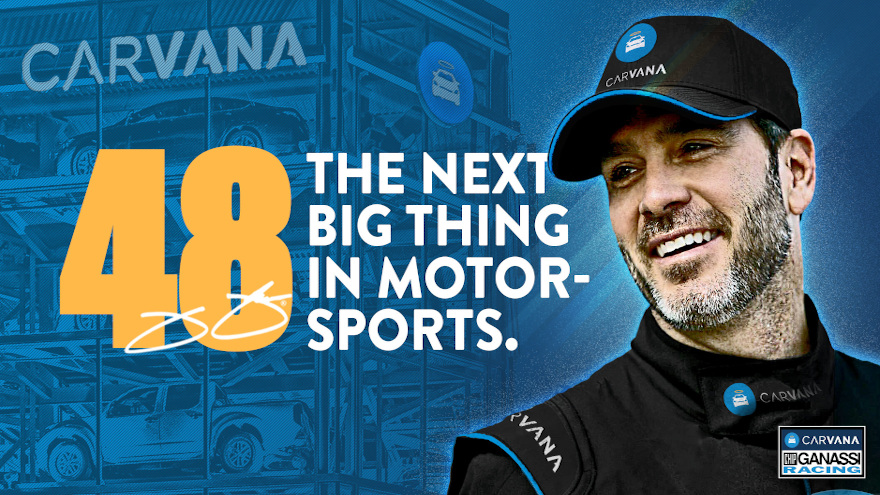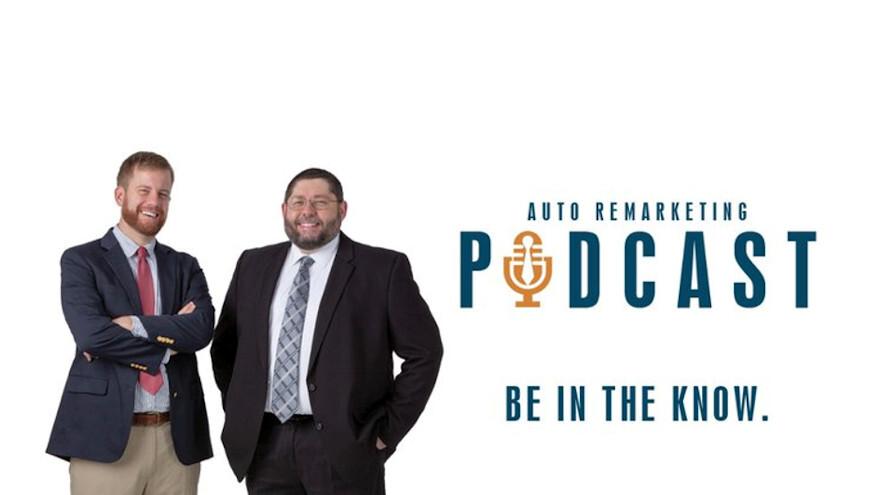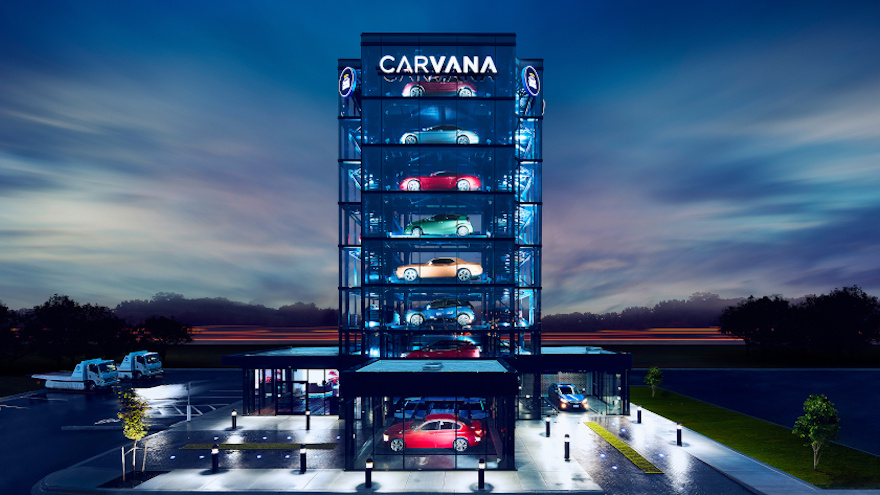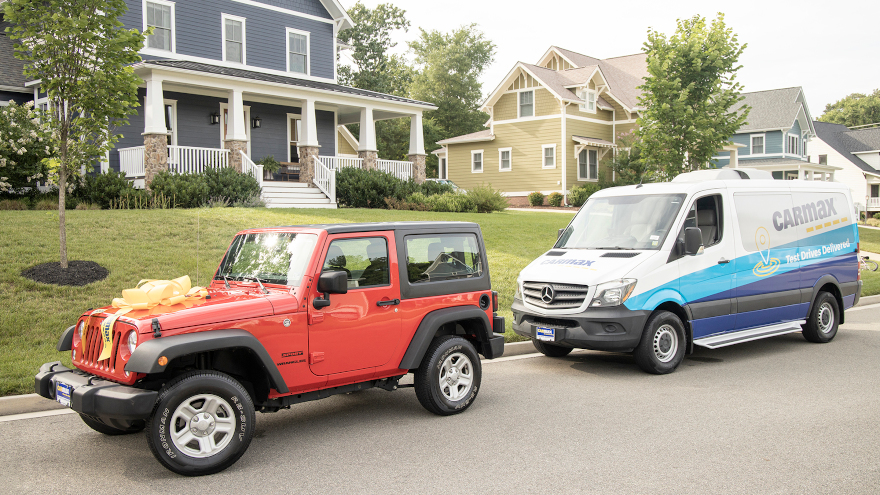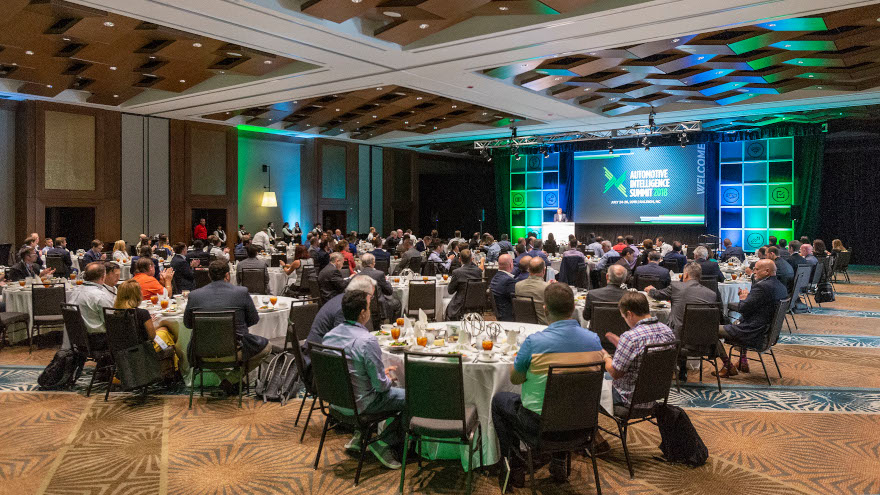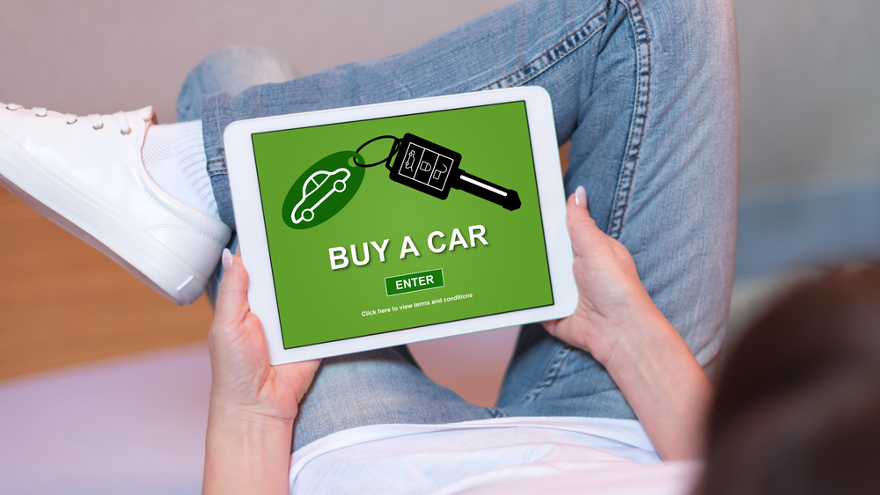It became apparent this spring, through the first wave of a Dealer Impact Study from Roadster and the National Automobile Dealers Association, that when dealerships were largely forced to go digital and sell remotely at the outset of the COVID-pandemic, they often became more efficient.
Part 1 of the study found that a dealership salesperson was averaging 13 sales per month this spring; this after the average for some 35 years had remained around 10 sales per month, according to data from NADA shared by Roadster.
That’s quite a jump – but is it sustainable?
That’s part of what Roadster chief marketing officer Michelle Denogean said Part 2 of the study was looking to uncover.
“And what we found, in fact, was that with a little bit more time using the technology, the units per salesperson grew,” Denogean said in an interview early last month.
Part 2 of the study, released in mid-October, included 320 dealers and a survey of 1,000 consumers. It found that the average salesperson was selling 16 cars per month in September.
Asked if those gains have more to do with fewer salespeople or the dealership having more digital retailing tools at its disposal, Denogean said it’s a bit of both.
One of the things dealers have gathered is that, “even though showrooms are wholly back open, only a little over half of them, 56%, are actually fully staffed. So even though we're open and demand returned, we as an industry didn’t fully return to 100% of our staffing,” Denogean said.
“It's definitely a big piece of it … the average staffing level now versus before the pandemic started is about 92%,” she said. “So, if you think about that, they've actually reduced their sales team by two to two-and-a-half people on average from where they were before.”
Denogean said that when dealers had to close their doors, physically speaking, “we really, as an industry, figured out how to do remote selling and started to recognize that we could handle the demand at hand even as it grew”
And demand has grown. The survey has found that current sales volume is about 104% of what it was a year ago, Denogean said.
“When you layer that up against the fact that they're not fully staffed, you can see it's sort of both,” she said. “We're selling more than we were before slightly, and we're doing it with less.”
And they’re also being more proactive about getting the consumer to complete more pieces of the car-buying process online ahead of time, which is helping with efficiency, as they have less of the process to finish once they’re at the store, Denogean said.
Interestingly enough, there were also findings that pointed to some more internal, operational gains at the dealership. For instance, in September, 63% of omnichannel dealers said digital retailing allowed them to complete contactless transactions, up from 52% in May.
Seventy percent said digital retail allowed them to have a more efficient sales process, up from 61% who said that in May.
Additionally, 46% said it led to more cars sold per salesperson, up from 24% in May.
Looking at some findings from the consumer side, the survey connected with 1,000 buyers who had purchased in the previous five months. The dealerships those customers were working with fit into a variety of buckets, with some being fully open, some open only online and some by appointment only.
All told, 44% of those buyers had done some piece of their transaction online, Denogean said. And that’s not just shopping, she said — it’s completing an actual transactional step like price negotiation or filling out a credit application.
Compare that to findings from a 2019 Cox Automotive Car Buying Journey study, which found that 10% did so.
The Roadster/NADA study found that 61% completed vehicle selection online, 35% set up financing/lease terms, 34% filled out a credit application, 34% negotiated price and 23% made their F&I selections online.
“They’re not the majority, but (there is) just huge growth in what people are doing online. I think that's really exciting to see that, even though at the end of the day they want to come into the showroom to finish the transaction — and we heard that from dealers when stores were closed,” Denogean said.
“We know they still have a desire to go in person, but what I think is starting to happen is not only are consumers finding that they can do some of these pieces, these time-consuming pieces, online, the dealerships are recognizing that if they promote that activity, if they encourage it, then they actually can be more efficient and keep their cost structure down.”
Jimmie Johnson is closing his spectacular NASCAR career with Ally Financial as his primary sponsor.
And now the seven-time stock-car series champion will begin his INDYCAR campaign with Carvana.
Over the weekend, Carvana announced it will be the primary partner for Johnson and Chip Ganassi Racing (CGR) in the 2021 NTT INDYCAR SERIES racing season in the newly formed Carvana Chip Ganassi Racing entry.
As a seven-time champion, Johnson co-holds the NASCAR record with Dale Earnhardt and Richard Petty for most premier series championships and is the only driver to win five consecutive titles (2006-2010).
Johnson’s 83 career wins is tied with Cale Yarborough for sixth all-time and is tops among active drivers.
With an impressive record any athlete would envy, Johnson said he saw his next challenge in INDYCAR and recently announced his plans to race with CGR in his continued pursuit of excellence.
Ahead of the upcoming season, Johnson is scheduled to participate in tests with CGR in the No. 48 Carvana Honda at Barber Motorsports Park and Laguna Seca in November.
Johnson’s new paint scheme will be unveiled prior to the start of the 2021 NTT INDYCAR SERIES season where he is scheduled to compete in the full road and street course calendar.
“Carvana is a young, tech-forward, smart and aggressive company and is the perfect partner for this next challenge in my career,” said Johnson, who will be competing for 2021 INDYCAR Rookie of the Year. “I’ve dreamed of racing in INDYCAR since I was a little kid. Going from one championship organization to another with CGR, you know the resources, including great people, are going to be there.
“To have friends like Scott (Dixon), Dario (Franchitti) and Doug (Duchardt) there to lean on and learn from just makes this transition so much better. 2021 is going to be a lot of fun,” Johnson continued in a news release.
Already with a unique marketing strategy from its nationwide footprint of vehicle vending machine to go with other media campaigns, Carvana will be able to continue to promote itself as digital retailer offering more than 20,000 vehicles with options for financing championed by Ally along with touchless delivery
“Jimmie Johnson has already made his mark as one of the best NASCAR drivers in history, yet he’s continuing to push himself with a new challenge,” Carvana chief brand officer Ryan Keeton said in the news release. “He’s not resting, but raising the bar, and that’s a mindset we can very much relate to. We’re looking forward to that shared challenger mindset, teamed up with Chip Ganassi Racing, for what is sure to be a fun, exciting racing season.”
Johnson is wrapping up his NASCAR career with race car boasting a special paint scheme orchestrated by Ally.
And then Johnson will be behind the wheel of the race car owned by Ganassi, who is eager to have Carvana on board.
“I think this is a perfect fit for our organization. Carvana is a very exciting technology company that is always continuing to challenge themselves to be the best they can be,” Ganassi said. “Like us, they value innovation. And when you add it all up, we seem to have a lot in common, which is why I think this relationship can really grow and be successful.
“You all know Jimmie and his accomplishments. Jimmie is a champion and a winner and will bring tremendous value to our organization. I think we’re going to learn as much from him and his approach as he is going to learn about INDYCAR racing. It will only move the team in a positive direction,” Ganassi went on to say.
Real-time messaging and chat functionality, virtual vehicle walk-arounds and test drives with video, and completing financing and trade-ins online.
Those are some of the new methods consumers are using to purchase their new or used cars from local dealerships.
Sixty-one percent of recent car buyers would want their newly purchased car delivered at home from their local dealership, Cars.com stated, sourcing a September DealerRater consumer survey.
Cars.com said the stay-at-home economy is not just driving trends toward home cooking and home improvement projects.
It is also bring a surge in buying cars delivered directly to consumers’ homes.
Cars.com says dealers are responding to that trend. CARS Dealer Community studies in March and August show a 35% increase in local dealerships offering home delivery services since March.
As shoppers and sellers juggle homeschooling and working from home, the COVID-19 pandemic accelerated their adoption of virtual car-buying tools and contactless home delivery options.
Those digital offerings provided a lifeline to local dealerships during showroom closures. In the months that followed, the offerings helped them compete effectively against disruptors and national online-only car sellers.
Consumers have turned to personal car ownership as their “preferred and safe mode of transportation” at the start of the pandemic and far beyond, Cars.com chief executive officer Alex Vetter said in a news release.
Vetter continued, “While the technology and digital retailing tools are not new to the industry or CARS, there is a noticeable increased usage driven by shopper demand and dealers are rapidly shifting their strategies to meet this new consumer expectation.”
Demand is growing for home delivery and virtual car-buying options from dealerships, according to Cars.com research.
COVID-19 is the main reason people are still buying cars. Fifty-seven percent of those who purchased a car within the last six months said the pandemic was the reason for the purchase, according to CARS Gen Pop In-Market Car Shoppers from August.
The pandemic resulted in an acceleration in online car shopping and buying, according to Cars.com Internal Data, Adobe Site Analysis, from September. Nationwide, walk-in traffic to dealership showrooms is still down 15%. Digital visits mainly replaced walk-in traffic, and Cars.com said that takes place as consumers “prefer to stay home and shop from afar.”
Fifty-seven percent of recent buyers said they conducted most of the vehicle transaction online with their local dealership. At 81%, online buying is highest in New York. Los Angeles follows at 73%. Next came Chicago at 65%, Atlanta at 64%, and Dallas at 63%.
Another finding from the research: Consumers are engaging more with dealers that offer virtual services.
Since Cars.com launched its new Virtual Appointment and Home Delivery badges on its website to show which dealers are offering those services, the company reports a 30% increase in contact and user engagement for dealers offering home delivery and virtual options over those still offering the “traditional showroom experience,” according to Cars.com Internal Data, Badge Analysis, from September.
Another finding: “Dealers are meeting consumers on their turf — their homes,” Cars.com writes.
At the start of the pandemic in March, 49% of dealers said they offered home delivery services.
By August, 66% offered the services.
That is a 35% increase in less than six months, according to CARS Dealer Community. Approximately 20% of recent car buyers used home delivery from their local dealership, according to a DealerRater consumer survey from August. Sixty-one percent of recent buyers would use that service from their local dealership if it were offered. Cars.com says that shows “sustained interest in this growing trend.”
Although luxury brands dominate home delivery, non-luxury is starting to move into the top 10. Recent car buyers who took advantage of home delivery purchased from a mix of luxury and non-luxury auto brands. Most home deliveries by brand by recent buyers include:
1. Land Rover
2. Mitsubishi
3. Lincoln
4. Mercedes-Benz
5. Volvo
6. Nissan
7. Infiniti
8. Cadillac
9. Acura
10. Buick
Mark Vickery, who is senior director of performance management at Cox Automotive, joins the Auto Remarketing Podcast to talk about digital automotive retail, dealer training, what 2021 may have in store and more.
Plus, Vickery recaps his recent conversation with NBA Hall of Famer Magic Johnson, who is a speaker at the company's Forward Focus 2020 program.
To listen to the entire conversation, click on the link available below, or visit the Auto Remarketing Podcast page.
Download and subscribe to the Auto Remarketing Podcast on iTunes or on Google Play.
In 2017, Carvana debuted its “New Way To Buy A Car” in Detroit.
At that time, “We were proud to become a part of a community known for its automotive innovation,” Carvana founder and chief executive officer Ernie Garcia said in a news release.
On Thursday, Carvana launched its newest car vending machine in Detroit. The brick and glass structure features a 27-vehicle capacity and stands eight stories tall.
Garcia said the 2017 debut “was a big moment for us — at the time we didn’t know how big.”
Three years later, he said, “We’re continuing to contribute innovations to the Motor City with our signature car vending machine.”
Carvana customers can shop an inventory of more than 15,000 vehicles. They can finance, purchase, trade in and schedule as-soon-as-next-day pickup at the new Detroit car vending machine. Area customers can also choose touchless home delivery.
Customers can set appointments by selecting a day and time, and at that time they will be the only customer inside the vending machine. A customer advocate will greet them, and they receive a commemorative, oversized Carvana coin to activate the automated vending process. Car buyers can then see their vehicle descending through the structure from the all-glass tower.
The newest car vending machine is the first for Carvana in Michigan and the 26th in the United States. Additional car vending machines are located in Kentucky, Tennessee, Texas, Florida and Maryland.
Carvana says it has also upgraded the concept of the traditional test drive. To ensure the vehicle fits their needs and lifestyle, car buyers can live with the car for a full week through Carvana’s seven-day return policy.
CarMax’s omni-channel experience, which lets consumers buy used cars online, in-store or a blend of both, is now nationwide.
The largest retailer of used cars in the U.S. said Thursday it has finished rolling out its omni-channel capabilities, a process it started in late 2018 with the launch of omni-channel in Atlanta.
“Our omni-channel experience is built to provide a personalized, multi-channel experience that empowers customers to buy a car on their terms,” CarMax president and chief executive officer Bill Nash said Thursday during the company’s earnings call to discuss its fiscal second quarter that ended Aug. 31.
“It is designed as a world-class in-store experience, a world-class online experience and a seamless integration of the two, giving us the largest addressable market within the used-car industry,” Nash said. “No other used-car retailer is in the position to deliver this iconic customer experience the way we can.”
The announcement arrived as CarMax reported record results for its most recently completed quarter.
With this omni-channel program, CarMax shoppers can utilize the company’s e-commerce to browse, save and transfer vehicles, while also lining up pre-approval and getting an online appraisal of their trade-in.
The transaction can be completed at a CarMax store or online, with options for home delivery (for most shoppers) or contactless curbside pickup at a store (which is available across the U.S.)
Why the multiple options? For one, the company says its research indicates consumers typically don’t want their car-buying interactions to be all or nothing, having to choose between either 100% in-store or 100% online.
The CarMax omni-channel experience is designed to provide flexibility and allow the customer to toggle the online versus in-store interactions based on their own needs.
“When we set out to create the future of car buying, we knew that customers wanted personalized, convenient and on-demand retailer experiences where they can seamlessly navigate between online and in-person, all on their own terms,” Nash said in a news release.
“CarMax has always stood for empowering the customer and offering an exceptional experience,” he said. “The significant investments we’ve made in technology and digital innovation, coupled with the tireless efforts of our 25,000 associates nationwide, enable us to deliver this iconic experience the way only CarMax can.”
Nash added: “I am confident our omni-channel experience, which gives us the largest addressable market within the used car industry, and our diversified business model will drive profitable sales growth and market share gains for years to come.”
Record revenues & profits
Going back to the record quarterly results announced Thursday, CarMax said it pulled in $5.37 billion in net sales and operating revenues for its Q2, a 3.3% year-over-year uptick.
Total gross profit was at $752.1 million for Q2, up 8.5% year-over-year. Through six months, total gross profit is at $1.11 billion, down 22.9%.
CarMax pulled in net earnings of $296.7 million for the quarter, a 27.0% hike. Its net earnings per diluted share were $1.79, a 27.9% increase.
For the first half of the year, net earnings were at $301.7 million, down 39.7%. Net earnings per diluted share were down 38.8% at $1.83.
CarMax moved 217,300 used retail vehicles for the quarter, a 3.9% gain. Sales through six months are down 18.7% with 352,358 units sold.
CarMax wholesaled 132,980 units for the quarter, a 5.1% improvement. First-half wholesale sales are down 20.6% at 196,275 units.
“We are very pleased to report record revenues and profitability this quarter,” Nash said in a news release. “The talent and commitment of our associates as well as the diversity of our business model allowed us to capitalize on the improved market environment to deliver a record quarter.”
There are nearly twice as many consumers per month using mobile devices for vehicle research as those using desktop computers.
But whether a car shopper picks up their smartphone or fires up the computer may depend on what car-shopping task they’re completing, their age and even what car brand they’re researching.
That’s according to researched released this week by Comscore, which found that there was an average of 6.6 million shoppers using mobile devices for car research each month in the first half of 2020 and 3.5 million using desktop computers.
While that’s certainly a wide gap, there were some variations in whether shoppers used mobile devices or computers.
For example, the age of the shopper.
Among mobile shoppers, the median age was 49 and almost half (49%) were under 45, Comscore said. Meanwhile, the median age for desktop shoppers was 56, with less than a quarter (22%) under 45.
Usage also varied by brand. There was more mobile traffic for Chevrolet, Ford, Jeep and Nissan, for example, but higher desktop numbers or Honda and Hyundai, according to the Comscore study.
Meanwhile, usage was split more evenly for brands like Dodge, Kia and Subaru.
And what stage of the process the shopper was in mattered, too.
Consumers were more likely to use desktops for a “build your own” or customization feature, “likely because the tool requires more time and effort to fully engage,” Comscore said.
But a shopper was more likely to use a mobile device to request a quote. Comscore says this likely indicates the consumer is using such a tool further down the shopping funnel, “closer to purchase and after a shopper had narrowed down their vehicle selection.”
And some functions like finding a dealer or offer tools were more evenly split in usage.
Finally, women were also more likely to use a mobile device for car shopping (43% who did so in the first half) than a desktop (33%).
Carvana recently made an array of upgrades to its imaging technology to promote the more than 15,000 vehicles it currently has in its online inventory.
While the technology is meant to help the digital retailer move its late-model inventory, Carvana wanted to highlight the capabilities even more, so it is giving car enthusiasts the opportunity to virtually tour some of the most epic vehicles ever courtesy of Craig Jackson, chairman and chief executive officer of Barrett-Jackson.
Carvana and Barrett-Jackson worked together so now a Porsche 911 GT2 RS, Ford Shelby GT350 convertible, 1970 Plymouth Hemi Cuda and Bugatti Veyron can be taken for a virtual spin from the comfort of home or on the go via mobile device at Carvana.com/spinner.
On that site, car enthusiasts can see this new technology at work to showcase the outstanding features of these rare vehicles such as factory-original black leather seating; in-violet metallic paint; a 3.8-liter, 6-cylinder bi-turbo engine; and 400-watt audio system.
Carvana said its latest imaging upgrade can provide four times the imaging detail, which is made possible by 64 angles, 26,000 LEDs and several gigabytes of 3D image mapping data for every single vehicle.
“We made the virtual vehicle tour a reality when we launched Carvana, providing customers with proprietary, high-definition, 360-degree photography of every vehicle, inside and out, calling out features and imperfections, so they knew exactly what they’re buying,” Carvana founder and chief executive officer Ernie Garcia said in a news release.
“This level of transparency was new to the industry when we launched just seven years ago, so we are incredibly proud to heighten that experience for customers with our advanced imaging technology. And we couldn’t ask for a better way to showcase it than with Craig Jackson’s epic vehicle collection,” Garcia went on to say.
Auto dealers not yet wholly confident in their digital retailing approach should find guidance at the Automotive Intelligence Summit later this month in Raleigh, N.C.
Spoiler: Online car sales are a people business.
Tim Cox, who is the co-founder and senior vice president of sales for CarNow, estimates that the car business has “only about 4% total end-to-end retail completion” online. Even for those that tout 100% of the process being online, things like paperwork are still analog, Cox said.
I interviewed Cox and five other digital retail technology leaders for this story, which is a prelude to July’s Auto Intel Summit, hosted by Cherokee Media Group, publishers of Auto Remarketing magazine. These interviewees will be session speakers at the event. The online agenda provides additional planning details.
“Whatever digital tool(s) dealers use, the first thing is to figure out where you’re going,” said Cox, whose session, “DR: Your Direction Determines Your Destination,” will share ideas for dealers and OEMs and unpack end-to-end digital retailing.
“You have to know where you want to go, like planning a trip, before deciding whether to take baby steps into the pool or jump all in,” Cox said.
Several speakers stressed the missing link in digital retailing is not technology, but people, both consumers and those they engage with online and in the showroom.
While technology makes individual processes more efficient and transparent to improve lead generation, digital retailing works best when a “champion” within the dealership makes sure leads get human involvement.
“Customers who take time to fill out a lead need to have a champion within the store to love and focus on them,” Cox said. “This is why CarMax can outsell any other dealership … and people willingly pay more for that kind of experience.”
Pete MacInnis, chief executive officer for eLEND Solutions, poses similar thoughts at his session, “Is Digital Retailing Promising More than it can Deliver?”
“Customers are not saying they want to buy online, but that they want a better experience,” MacInnis said.
“The industry today isn’t focused on digital retail from a maturity perspective, but about an elegant look and feel to the consumer presentation. But in reality, what we’re talking about with digital retail is more elegant lead-gen,” MacInnis said.
The complexity of the car business — including the entire supply chain — complicates what digital retailing promises.
“There is a lot of silo-ing, both operationally and technically, and so sales and finance, for instance, work as separate profit centers and thus are departmentalized to consumers,” MacInnis said.
He noted that while dealer websites offer consumers self-help tools like online calculators, trade-in evaluation tools and finance apps, individually, they’re siloed, so too often what a consumer calculates for payment or trade value online isn’t what’s reality when they come into the store to work a deal.
“There is a lot of elegant presentation layers to what consumers see online,” MacInnis said, “but what the industry is lacking is the plumbing, the infrastructure behind it. Digital retailing hasn’t evolved yet; we have the presentation and stickiness down, but some pieces are missing.
“Digital finance has to be part of the upfront sales process. It has to be penny-perfect. When you can blend customer data, purchase transaction data, tax and license fees, and the customer’s credit qualifications and the lenders’ and factories’ programs — only then are you able to determine what the dealer finance profitability will be,” MacInnis said.
Despite years of promotion, digital retailing’s promise is still future tense.
“It’s one of the hottest topics in the industry, yet one of the least understood,” said Andrew Tai, chief executive officer at Motoinsight. “We talk about selling cars online, but digital retailing is about so much more. Frankly, consumers don’t want to buy online without ever visiting a showroom or test-driving the car. Car buying is still very much a touch-and-feel experience.”
From his perspective, the missing link in digital retail is consumer convenience and connection.
“Convenience does not discriminate across any category or demographic,” said Tai, whose session title is “Digital Retailing: Separating the Facts from the Fiction.”
Take online leads, for instance. “We mystery shop a lot of dealer websites, and almost 80% of the lead responses we receive in return lack any substantial value — they most often just ask when they can visit the dealership. We can do better than that as an industry, and digital retailing tools help with this,” Tai said.
“No doubt the purchase of a vehicle is complex, but this is why great dealers have great processes,” Tai said. “They may not always understand the hype around online selling, but dealers have been negotiating and selling cars by phone and e-mail for a long time, so the idea isn’t new to them.
“What is new today are the infrastructure and digital tools designed to streamline those processes and experiences,” Tai said. “That said, a dealer who struggles selling cars today the traditional way will also struggle via digital retail.”
He believes the coming five years will see more business technology innovation than the industry has witnessed across the last 15.
“Dealers [who master digital retailing] will start to play offense, winning market share and dominating their markets — or they’ll see digital retailing as a threat and will retrench and play a defense game, and those that do that will be merely postponing their demise,” Tai said.
In the session “Digital Retailing and the Role of FinTech: Credit First vs. Credit Last,” Tarry Shebesta, CEO for truPayments, will look at the role fintechs play within the online path-to-purchase.
Related to this topic, he believes dealer websites can be confusing for consumers. They spend hours researching and narrowing their vehicle selections, and once they move into financing at the dealership learn they cannot afford that vehicle based on their credit and down payment, among other factors.
That, Shebesta said, adds friction to the car-buying process and often defeats the deal.
A credit-first strategy helps dealer websites deliver up just that inventory that matches the customer’s affordability criteria, such as monthly budget, down payment amount, credit criteria and trade-in equity.
This credit-first strategy, he said, helps dealers deliver a more personalized shopping experience.
A credit-first website app also creates browser curiosity, even for consumers not actively searching, that often piques interest and pulls even just-looking shoppers into the dealer’s sales funnel.
Equifax Automotive Services has its eye on helping dealers and lenders capture these opportunities.
“In the ideal world of the future, customers will be able to shop for and find the right vehicle for them, with the right payment, well before they walk into the dealership, and that is a big challenge,” said Craig Sims, vice president.
“The industry has a lot of systems and data out there, and the challenge we face as an industry is putting those pieces together in a way that improves the process for the customer and along the way provides some value to dealers, lenders and OEMs,” Sims said.
“It is hard for a dealer to follow shoppers across their buying journey, and so it’s difficult for a dealer to connect the Craig standing the showroom with the Craig looking at a specific vehicle on the website earlier,” he said.
“For the players out there, we’ve been working on putting these pieces together to help them make their box better so the consumer’s experience is enhanced,” he said, noting the right answers help shorten the shopping experience for consumers while building trust and confidence into the online-to-showroom transition.
The earlier in the shopping journey dealers can offer these answers to consumers, the more successful those connections will be for all parties. With the right data, Sims said, dealers can also better match area consumer interests and needs to the vehicle types stocked to improve sales and inventory turn.
“Most consumers shop on payment, and it is difficult for them to understand what a car payment will be before they walk into a showroom, but we at Equifax are well positioned to help lenders and dealers solve that problem for consumers wondering, ‘If I have $500 for a monthly payment, what can I buy?’ They don’t have that now,” Sims said.
Attorney Jason McCarter is a partner with Eversheds Sutherland and head of its U.S. automotive practice. His AIS session, “Legal Issues of Selling Online,” will survey top legal “thorns” associated with online car sales, including best practices for digital retailing and related remarketing services.
McCarter will address state, federal and general contracting issues, including cross-border concerns, franchising and licensing, forms and advertising requirements, e-signature, collateral liquidation and dispute considerations.
“There’s a real risk that both the seller’s jurisdiction and the buyer’s jurisdiction will have an interest in regulating interstate offerings and transactions, but there are certain legal steps sellers and their vendors can take to anticipate and lessen that risk,” McCarter said.
The viewpoint of CarNow’s Cox, summarizing changes he sees transforming digital retailing, is shared by many.
“We have to understand that we are no longer in the car business, but in a service and people business,” he said. “That point isn’t even debatable anymore. The takeaway here is if I treat my customers the way I like to be treated, everything else in the selling process will take care of itself.”
Tim Cox, who is one of the founders of CarNow, said his company reached out to the top five dealers using its BuyNow digital retail platform and asked what had enabled their success.
The common thread of their responses?
"You have to have a champion inside your store. Period,” Cox said in an interview earlier this year at NADA Show 2019 in San Francisco.
“Somebody's got to own it. I have a pre-owned manager, I have an F&I manager, so whether it's my tool or somebody else's, they've got to have somebody that comes in and looks at that dashboard every day,” he said. “And then they have to respect what the customer did through the process … and then when (the customers) come in, it's a different VIP process.
“That's the main thing: If dealerships get that right, game-changer,” Cox said. “We've seen it.”
CarNow’s product line includes the BuyNow digital retail platform, the MessageNow chat function and in-store experience tools through kiosks and iPads.
"They key to all that is, no matter where the customer goes, they have the same experience,” Cox said. “Whether it's a chat, a text, Facebook Messenger or Marketplace, they come to the digital retailing (platform) or they come to the store, it follows them. Their information follows them. One dashboard, easy to measure for the dealers.”
‘More and more momentum’
Digital retailing has become one of the most talked-about topics in the auto industry over the last handful of years, both in terms of online marketplaces outside of traditional dealerships to the dealers themselves providing online buying, often through providers like CarNow and a bevy of others.
Vroom, much like its peer Carvana, is one of those online marketplaces selling directly to consumers.
In a March interview, Auto Remarketing asked Vroom chief executive officer Paul Hennessy what consumer shopping behaviors make it more advantageous for digital retail to emerge in automotive.
There is a high level, “broad-based move online” with retail, and cars are now part of that “ecommerce realm,” Hennessy said.
“It's been building over time. (Vroom has) been at this five years, and so we’re just seeing more and more momentum of broad-based demand moving online,” he said.
“First and foremost, there's just an appetite in the marketplace for that. And then we even see that with some of our contemporaries and how well they're doing, selling cars online,” Hennessy said. “So, I think that this, in the coming months and years, will be a less interesting topic … but right now, because there's still a level of newness, and because we're up against a traditional model, there's a lot to hear about it.”
Beyond the “swell moving online,” Hennessy emphasized that choice, pricing and transparency are of utmost importance to consumers.
“We've found as we've scaled inventory, as we've listened to demand signals in the marketplace, as we're having the right cars at the right price, that facilitates higher interest, higher conversion,” he said. “And our approach with a full transparency, no haggle, combined with seven-day test drives, 250-mile exercise of the car — all of these elements are resonating with consumers and therefore they're voting with their wallets by purchasing.
“But I think the key elements are there's a broad set of inventory, a great product offering and then transparency … taking all the friction points out of the process is resonating well with consumers.”
And dealers are seeing the importance of digital retailing options, as was evident at the NADA show.
Cox, and a former dealer himself and one of the speakers lined up for the Auto Intel Summit next month, said there was enough “buzz” at the NADA convention to where digital retailing is likely to turn a corner this year.
“Most dealers are under the impression that they know they have to do something. And consumers are expecting some form of digital retailing,” Cox said.
He was predicting that from the NADA Show onward, there would “be a big impact on how many dealers are utilizing the tool;” however, Cox emphasized that, “the results are going to be based on, are they just putting a widget on their site or are they really doing things to enhance the process for the customer, and add process on the back end of the tool?"
After all, perhaps the main point of digital retail is to do exactly that: Improve the process for the end consumer.


